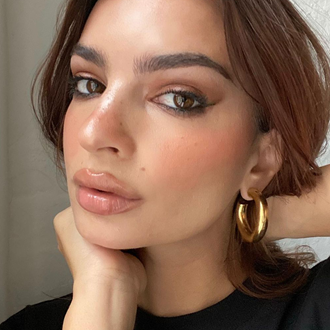Get the lowdown on this volumising facial treatment
We get it: it can sometimes feel like an uphill battle to fight the signs of ageing. While supercharged serums can address hyperpigmentation, laser treatments can work on resurfacing the skin’s top layers and oxygen facials can boost hydration, it can be a daunting task to find a suitable facial treatment to target loss of volume, elasticity and hydration in your face all at once.
One way to increase volume and elasticity and optimise skin rehydration is with dermal fillers. These products are synthetic injectable gels that replicate naturally occurring sugar molecules in the body. When injected into areas of your face, they provide volume and hydration.
Curious about the treatment? Here are five things you need to know before getting dermal fillers.
#1 / The areas of the face that can be treated with dermal fillers
Beyond having dermal fillers injected to smooth out fine lines and improve the shape of your pout, they can also be injected into other areas of your face to reshape and increase volume.
Fillers can be injected into the cheeks to lift the area and reduce the nasolabial folds; into the lips to plump up and add volume; around the eye area to minimise crow’s feet, lines and tear troughs or even the chin and jawline to provide more definition.
For a natural result, your doctor may choose to use dermal fillers in conjunction with anti-wrinkle injections (which can relax facial muscles) to balance out your features. However, each patient is an individual and has a different face shape so will therefore need a customised treatment plan.
#2 / Why you should consult a professional
Just as it’s important to see a trained therapist for facials or a specialist for health issues, it’s equally important to see a doctor that specialises in injectables for best results. Going to a doctor that’s trained in injectables and adopts a total face approach can give you the natural results that you’re after and make you look refreshed. Don’t know where to go? Visit myfacemyallergan.com.au and enter your postcode to find your closest clinic.
#3 / The questions you need to bring to your consultation
No two healthcare practitioners are the same as there are multiple ways to become trained in administering dermal fillers. As a result, you should always see a qualified doctor and ask for a consultation before getting injected. Be prepared to ask multiple questions, these may include:
● What brand of fillers are you using, and why are you using one type over another?
● Has this brand of filler been tested and researched extensively?
● Which areas of my face are you injecting into?
● How many units are you injecting into each area of my face?
● How long do these dermal fillers last for?
● What happens if I don’t like the final result?
● How much training have you received in dermal fillers, and from where?
● What after-care will you provide me? Will there be a follow-up appointment?
● How much will it all cost?
#4 / The hard facts: the cost, pain and risks
As dermal fillers are administered by injection, there may be some discomfort during the treatment. However, each person has a different pain tolerance so it’s hard to gauge how much dermal filler injections will hurt. Your doctor or nurse may ask if you want some numbing cream applied before the treatment to lessen the pain. In addition, dermal fillers contain a local anaesthetic that helps numb the area being treated.
As for the cost, this depends on the doctor and location you’re visiting, and is something that you should ask about during your initial consultation. As an entry level guide, anti-wrinkle injections start at $300 and fillers generally around $500 per mL. For most patients, you can do quite a bit with 2 mL of filler.
It is also important to know what the risks or side effects of injectables are before you go ahead with treatment and this is another question that you should ask your doctor or nurse before proceeding.
#5 / How to time your treatments
Dermal fillers and anti-wrinkle injections can take different amounts of time for results to show, so it’s important to keep this in mind before making your appointment.
Results from dermal fillers can be seen immediately (and any swelling will depend on the area of the face that is injected) and last between nine to 24 months, depending on the type of dermal filler used and the area that is injected.
Anti-wrinkle injections, on the other hand, may show initial effects after a couple of days and can take between seven to 14 days to take full effect, and usually last between three to four months.
For more information on injectables, such as dermal fillers and anti-wrinkle injections, visit myfacemyallergan.com.au to read up on the topic.
AU/0315/297(1) Date of preparation Dec 2017
From makeup to a non-surgical treatment, here's how to reshape your jawline and chin profile.
Have you tried fillers before? What was your experience like? Let us know in the comments below.
Main image photography: Getty

Iantha is BEAUTYcrew's Beauty Editor, and has been part of the team since the site launched in 2016. Besides pinky-nude nail polish and wispy false lashes, she has a healthy obsession with face masks and skin care ingredients. Her previous work can be found in Virgin Australia Voyeur, Women's Health, and SHOP Til You Drop.
Brought to you by









